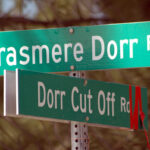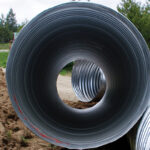Home »

Want to watch the sun disappear?
A rare natural phenomenon will be occurring in a part of the nearby United States on August 21.
The sun will vanish from the sky during a solar eclipse, as the moon’s shadow sweeps eastward across the USA from the Pacific Ocean.
 Local photographer Dan Hicks suggests if people want to see this rare event August 21 they should start making plans.
Local photographer Dan Hicks suggests if people want to see this rare event August 21 they should start making plans.
“As the August 21 eclipse path will be rather congested, East Kootenay residents should decide in advance whether or not they intend to travel south into the USA to witness this rare natural phenomenon,” he said.
A total solar eclipse will be visible in such locations as Idaho Falls and Cascade Id., Jackson Hole, Wy. and Salem, Or.
The below map shows where the total and partial eclipses will be seen, cloud cover permitting, closest to the the East Kootenay.
Hicks provided e-KNOW with the following information about the solar eclipse.
Total Solar Eclipse of August 21 (Monday); partial and total solar eclipse Mountain Daylight Times for two locations: Idaho Falls, Idaho – Partial begins 10:15 a.m. Totality 11:32-11:35 a.m. Partial ends 12:58 p.m. Totality two minutes 18 seconds, solar magnitude reduced to 1.0.
(The eclipse path centre is north of Idaho Falls, at the intersection of Interstate 15 & Highway 33).
Jackson Hole Airport, Wyoming – Partial begins 10:17 a.m.; Totality 11:35-11:37 a.m.; Partial ends 1 p.m. Totality two minutes, 20 seconds, solar magnitude 1.0. Jackson, Wyoming: times are the same as the Jackson Hole Airport, but Jackson’s totality is slightly less, two minutes 15 seconds.
The maximum duration of solar eclipse totality occurs at Hopkinsville, Kentucky with two minutes and 40 seconds. The sun’s apparent visual magnitude is -27.
Its absolute visual magnitude is 4.8 (at a distance of 10 parsecs, equal to 32.6 light years). Never look directly at the sun – view it only through a #14 rectangular welder’s glass (but note, the #14 is an unsuitable filter for binocular or telescopic viewing).
Sources: NASA Eclipse Website (Nasa.gov); & Observer’s Handbook 2017 of the Royal Astronomical Society of Canada.








